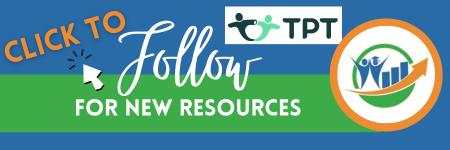5 Steps to Helping Students on the Autism Spectrum
- Dianne McKinley
- Jan 26, 2021
- 3 min read
Updated: Jul 10, 2024

Applied Behavioral Analysis…you have heard about it and you may have been told to use it. “They” told you that it will solve all of your problems with managing and teaching every single student with autism you have ever had and ever will have! It is THE one-size fits all fix, right?
It can be tremendously helpful, but not if you have no clue what it is or how to use it. The idea that there’s a one size fits all program that will reach every child is a myth. All people are different and working with students on the autism spectrum is no exception. Applied Behavioral Analysis (ABA) is a kind of therapy that children on the autism spectrum can receive at a young age to improve their successes and learn how to navigate through the world with a social/sensory responsive body.
In a school setting, Applied Behavioral Analysis does contain components that will more often than not reach students you have struggled reaching before. But, the components must be individualized, followed, enhanced, and individually tweaked to reach students. ABA is not just for students on the autism spectrum, however, it is critically important for students with autism.
Pro Tip: If you have a great personal relationship with your students, it will make the implementation of ABA even easier and more effective.
5 Steps of ABA
Task Analysis
Chaining
Prompting
Fading
Shaping
Now, what are THESE words?

Task Analysis
This part of the ABA process is exactly as it sounds. It is the process of delving deep into the concept you are trying to convey and preparing the task in a way you know will benefit the individual student, based on your knowledge of that student.

Chaining
This is when you break down the concept you are teaching into smaller parts. You teach these small “bites” of the standard for a more solid foundation and ability to put it all together in the end.

Prompting
When you get to this step, you are confident in your preparation, using the last two steps. And, now, you develop a way to give hints or prompts to the student without giving them the answer. The prompt should be something that the student recognizes and associates with what you are prompting them to do. This will avoid students “messing up” then losing confidence which may lead to a meltdown.

Fading
By this point, you are trying to prevent the students from becoming dependent upon your assistance. This is when you are gradually removing prompts so the student is demonstrating their knowledge without you. Be careful not to fade out too fast. This is a gradual process.

Shaping
The final step is simply positive reinforcement for students making an effort to demonstrate their new knowledge. Even if it is not perfect, recognizing the effort is equally as important as the outcome. It also lets you know what you need to remediate going forward.
If you use these concepts, in this order, you will experience a higher level of success and you will lessen the amount of explosive behaviors you see in your students. However, if you don’t take time to learn about your students (all of them), it will be difficult to use the ABA concepts to your benefit. If relationship building isn’t your forte, go to the PBIS website where there are many resources you can implement that will allow you to really learn what makes your students tick.
Statistically, teachers who have accepted ABA as a valid method in educating students on the autism spectrum have experienced nearly 70% more success than teachers who have not accepted the benefits of ABA. Teachers say the barriers are to using ABA in their classrooms, regarding the mindsets and beliefs around behavior modification in students on the spectrum.
This included their beliefs on “nature vs. nurture “ in behavioral issues. Teachers who believe that students’ behavior reflects ONLY bad parenting, find themselves looking at behavior problems, throwing up their hands, and taking the stance that it’s not in their control. Obviously, these teachers find the least success.
In Conclusion
Applied Behavioral Analysis is a research-based proven method for improving both behavior and academics with students on the autism spectrum. In my workshops, I talk more in-depth about how to apply these concepts and provide many additional ways to find success in teaching students on the autism spectrum. Email us to learn more about Autism workshops.
Read our Top 6 Books for Teachers in 2021.




